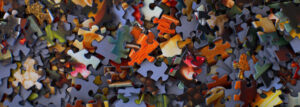Understanding Terminology Using Jigsaw

At a Glance
Discipline
- Social sciences
Instructional Level
- College & CEGEP
Course
- Program Design I
Tasks in Workflow
Social Plane(s)
- Individual
- Group
Type of Tasks
- Discussing
- Creating & designing
- Reading
Technical Details
Time
- Single class period (< 90 mins)
Instructional Purpose
- Preparation & knowledge activation
- Application & knowledge building
Overview
This activity expands on the jigsaw strategy by getting students to develop expertise on not one, but two different key concepts in recreation management; what is a program area of recreation programming (e.g., arts, fitness, outdoors, hobbies, dance, etc.), and how to link it with different program formats (workshops, events, recreational, instructional, competitive). In groups students will also explore how these concepts vary regardless of facility.
In their groups, students first learn about the specifics of a program area. They are expected to brainstorm ideas and ensure that everyone in the group understands the concept. They then re-group so that each new group has one person from each program area. The instructor then assigns each new group a program format, and they discuss and apply it to their program area. Finally, students go back into their original groups and plan how each program format can fit their program area and create a sample overview, identifying examples of programming an agency could plan or implement.
Instructional Objectives
- To enable students to understand the difference between a program area, program format and recreation facility;
- For students to learn how different formats can be applied in different program areas and be able to make connections between them.
Workflow & Materials

Activity Workflow
Applied Strategies
Published: 27/11/2018
Copyright: © 2025 Martin. This is an open-access article distributed under the terms of the Creative Commons Attribution License (CC BY). The use, distribution or reproduction in other forums is permitted, provided the original author(s) and the copyright owner(s) are credited and that the original publication on this website is cited, in accordance with accepted academic practice. No use, distribution or reproduction is permitted which does not comply with these terms.
